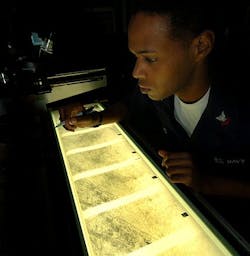Siemens, Carnegie Mellon, and HRL pursue artificial intelligence to analyze images and text
WASHINGTON, 10 Nov. 2013.Artificial intelligence experts at the Siemens Corp. Corporate Research And Technology Division in Princeton, N.J., are joining those at Carnegie Mellon University in Pittsburgh and HRL Laboratories LLC in Malibu, Calif., on a military research project to unlock secrets in the nature of knowledge in an effort to improve tools and training available to intelligence analysts.
Siemens won a $2.2 million contract this past week for the Knowledge Representation in Neural Systems (KRNS) program of the Intelligence Advanced Research Projects Agency (IARPA) in Washington.
Carnegie Mellon, which won a $4.8 million contract, and HRL, which won a $10.3 million contract, received their awards in September before the government shutdown.
Experts from Siemens, Carnegie Mellon, and HRL will develop new theories that explain how conceptual knowledge is represented in the human brain and test those theories by demonstrating the ability to predict and interpret concept-relate patterns of neural activity measured non-invasively.
Awarding the contracts on behalf of IARPA were officials of the U.S. Air Force Research Laboratory at Wright-Patterson Air Force Base, Ohio. IARPA is the research arm of the U.S. Office of the Director of National Intelligence.
KRNS seeks to develop and test theories that explain how the human brain represents diverse types of conceptual knowledge within spatial and changing patterns of neural activity.
Siemens, Carnegie Mellon, and HRL experts will develop systems that aim to predict patterns of neural activity associated with particular concepts and that can interpret which concepts are represented within measured patterns of neural activity.
The program will obtain all neural activity data using non-invasive methods such as functional magnetic resonance imaging (FMRI) and magnetoencephalography (MEG).
The program may uncover new ways of helping intelligence analysts probe deeply into images, video, text, and other data sets. When making sense of intelligence data, analysts rely on rich repertoires of conceptual knowledge to resolve ambiguities, make inferences, and draw conclusions.
Conceptual knowledge refers to knowledge about the properties of an entity -- such as an apple is edible -- as well as its relationships to other entities -- such as an apple is related to orchards and grocery stores.
Understanding how the human brain represents conceptual knowledge is a step toward building new analysis tools that acquire, organize and wield knowledge with unprecedented proficiency, IARPA officials say.
Moreover, such understanding may lead to the development of novel techniques for training intelligence analysts and linguists.
The KRNS program consists of two phases: one that seeks to understand how the brain varies its representation of a concept, such as the apple was delicious, versus the boy threw the apple.
The second phase of the KRNS program will explore how the brain represents single concepts and combinations of concepts, such as the doctor drove the car, as opposed to doctor, drove, and car.
Siemens, Carnegie Mellon, and HRL should finish this phase of the KRNS program by November 2016. For more information contact Siemens Corporate Research online at www.usa.siemens.com/en/about_us/research, Carnegie Mellon University online at www.cmu.edu/research, HRL Laboratories at www.hrl.com, or IARPA at www.iarpa.gov.

